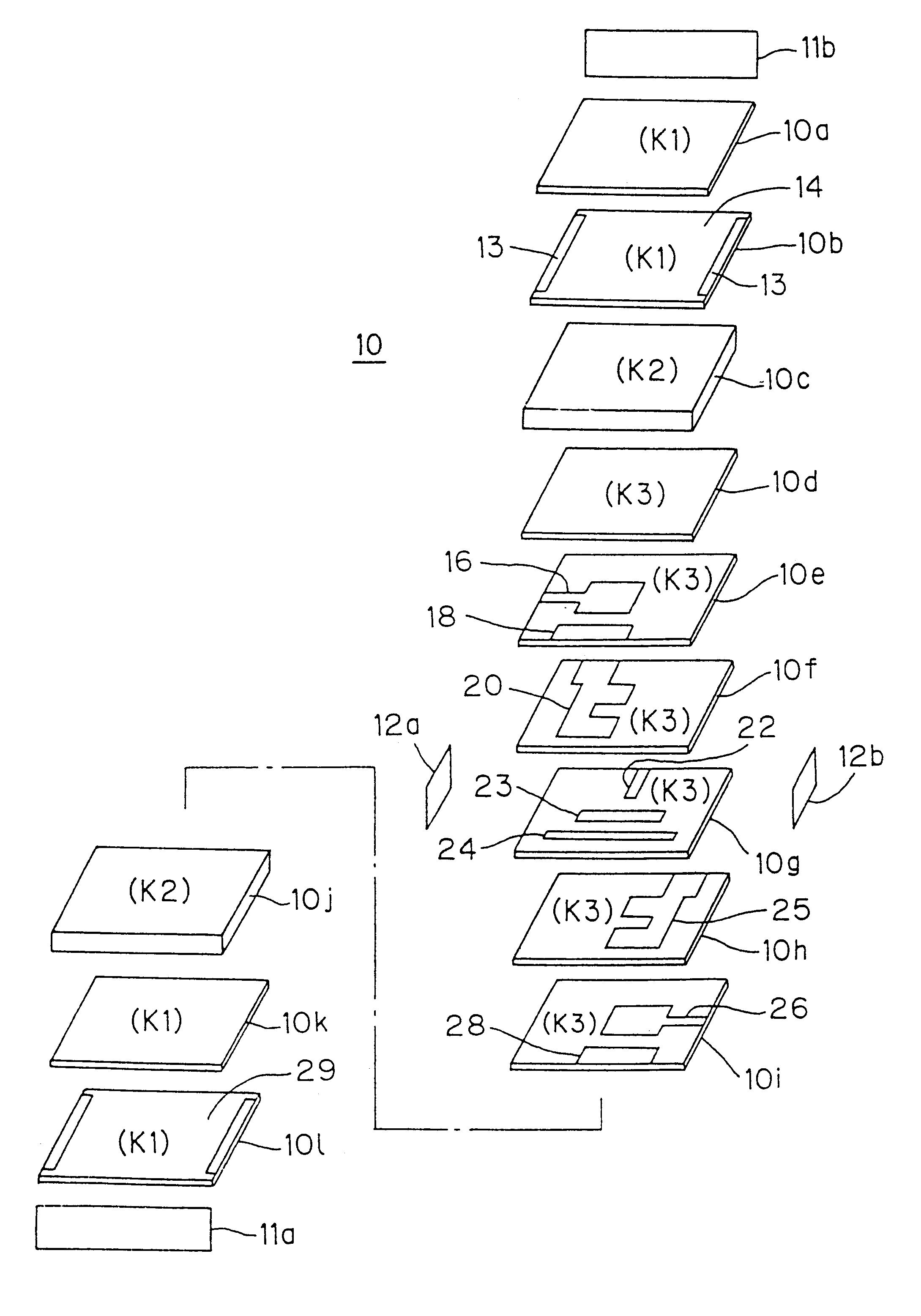Dielectric filter
a filter and dielectric technology, applied in the field of dielectric filters, can solve the problems of limited cost reduction by reducing the filter size, and limited manufacturing cost reduction by this approach
- Summary
- Abstract
- Description
- Claims
- Application Information
AI Technical Summary
Benefits of technology
Problems solved by technology
Method used
Image
Examples
Embodiment Construction
Conductive paste containing silver as its main component was applied, by means of silk screening, onto green sheets made of a ceramic material having a high dielectric constant, the material having a dielectric constant equal to 75 (K3=75) and containing barium titanate as its basis material. The paste on the green sheets was dried, whereby the electrodes 14; 16 and 18; 20; 22; 23 and 24; 25; 26 and 28 were formed. The green sheets with the electrodes thus formed thereon were combined with a predetermined number of green sheets without electrodes to form a respective one of the dielectric layers 10a to 10l. These dielectric layers were laminated and then simultaneously pressed and heated in a single sintering process, whereafter the electrodes 11a, 11b, 12a and 12b were formed on the respective sides to obtain a sample A for comparison. The thickness of the part consisting of the layers 10a and 10b was 100 .mu.m, that of the layer 10c 400.mu.m, that of the part consisting of the lay...
PUM
 Login to View More
Login to View More Abstract
Description
Claims
Application Information
 Login to View More
Login to View More - R&D
- Intellectual Property
- Life Sciences
- Materials
- Tech Scout
- Unparalleled Data Quality
- Higher Quality Content
- 60% Fewer Hallucinations
Browse by: Latest US Patents, China's latest patents, Technical Efficacy Thesaurus, Application Domain, Technology Topic, Popular Technical Reports.
© 2025 PatSnap. All rights reserved.Legal|Privacy policy|Modern Slavery Act Transparency Statement|Sitemap|About US| Contact US: help@patsnap.com



